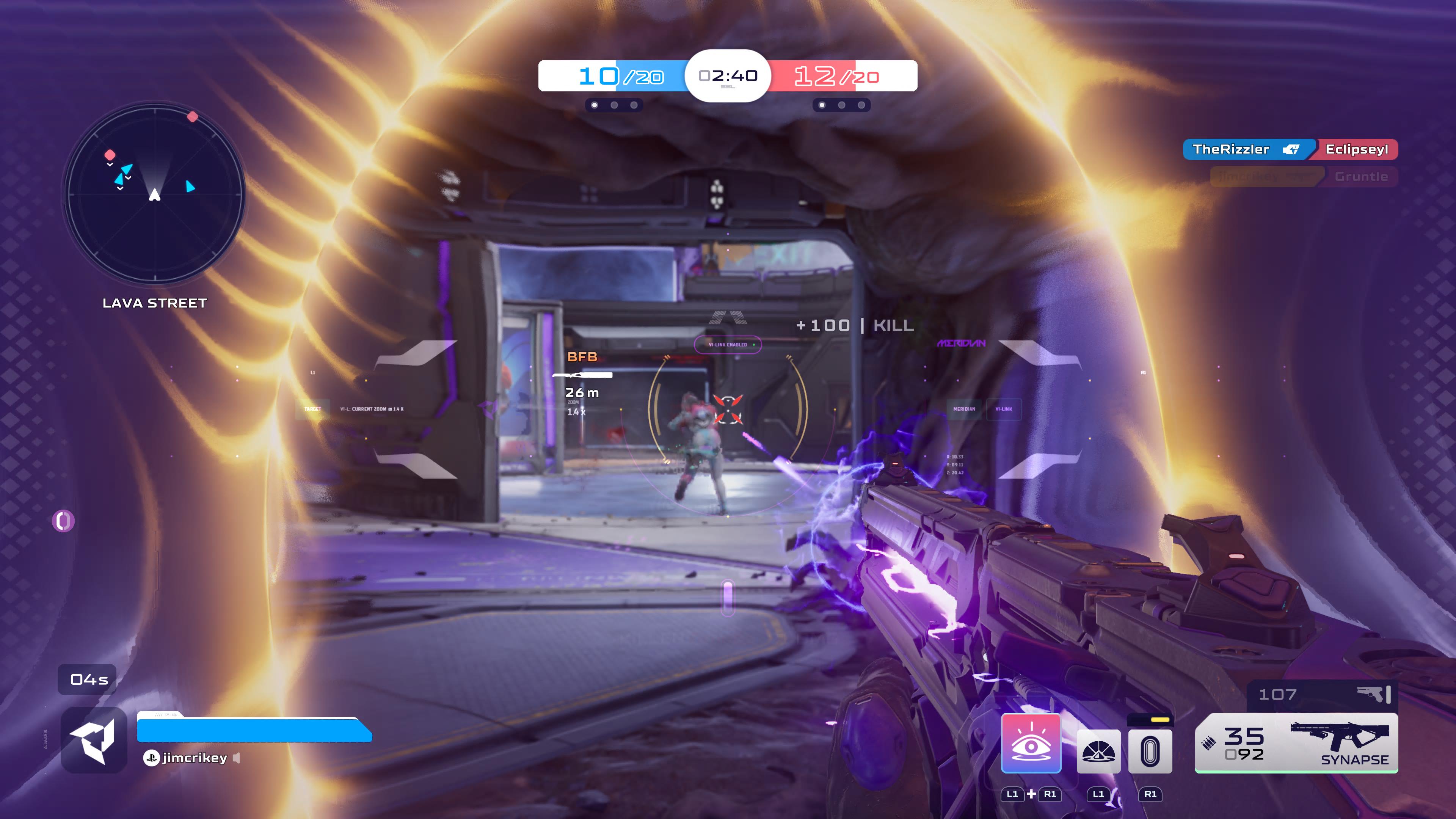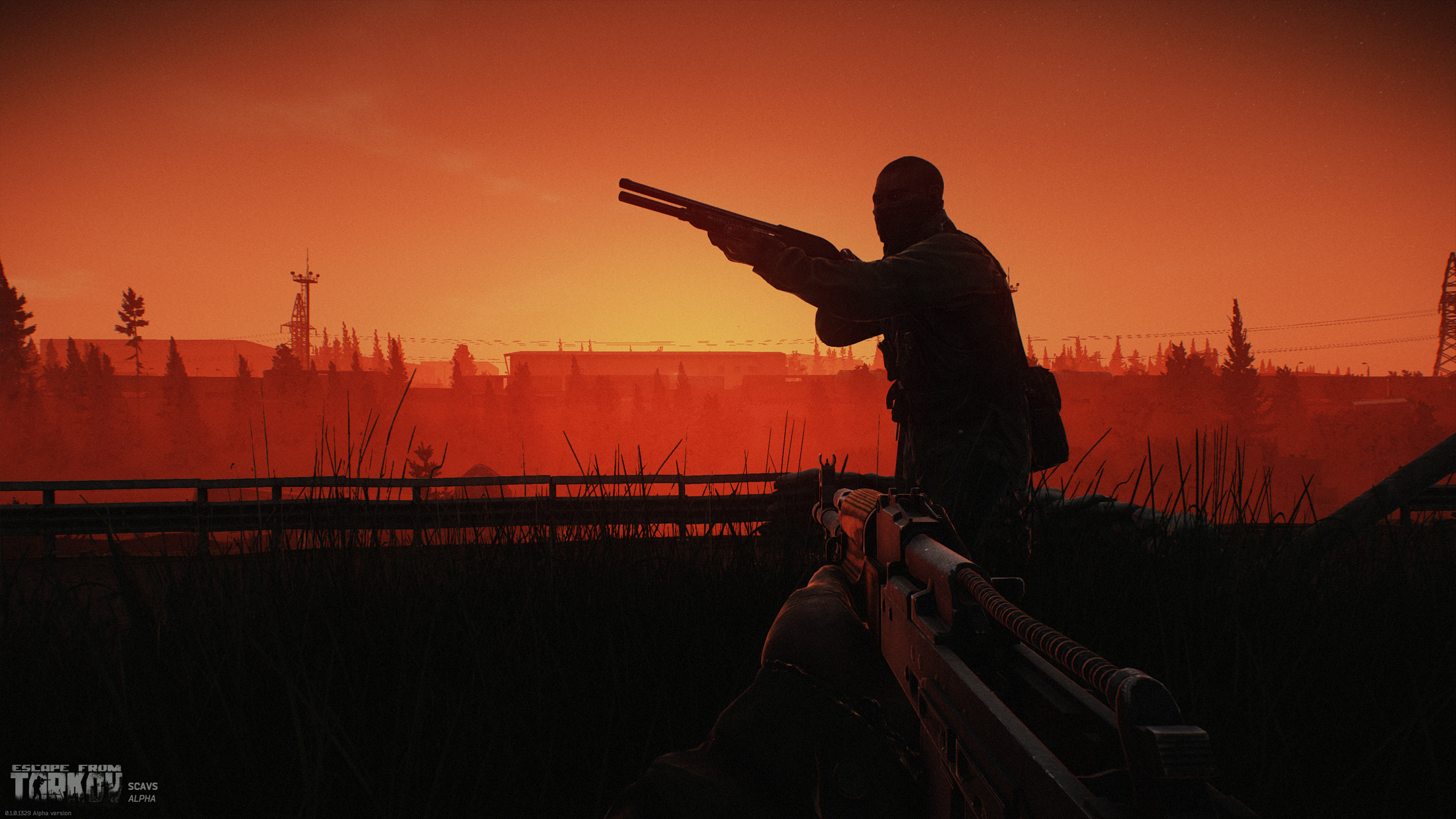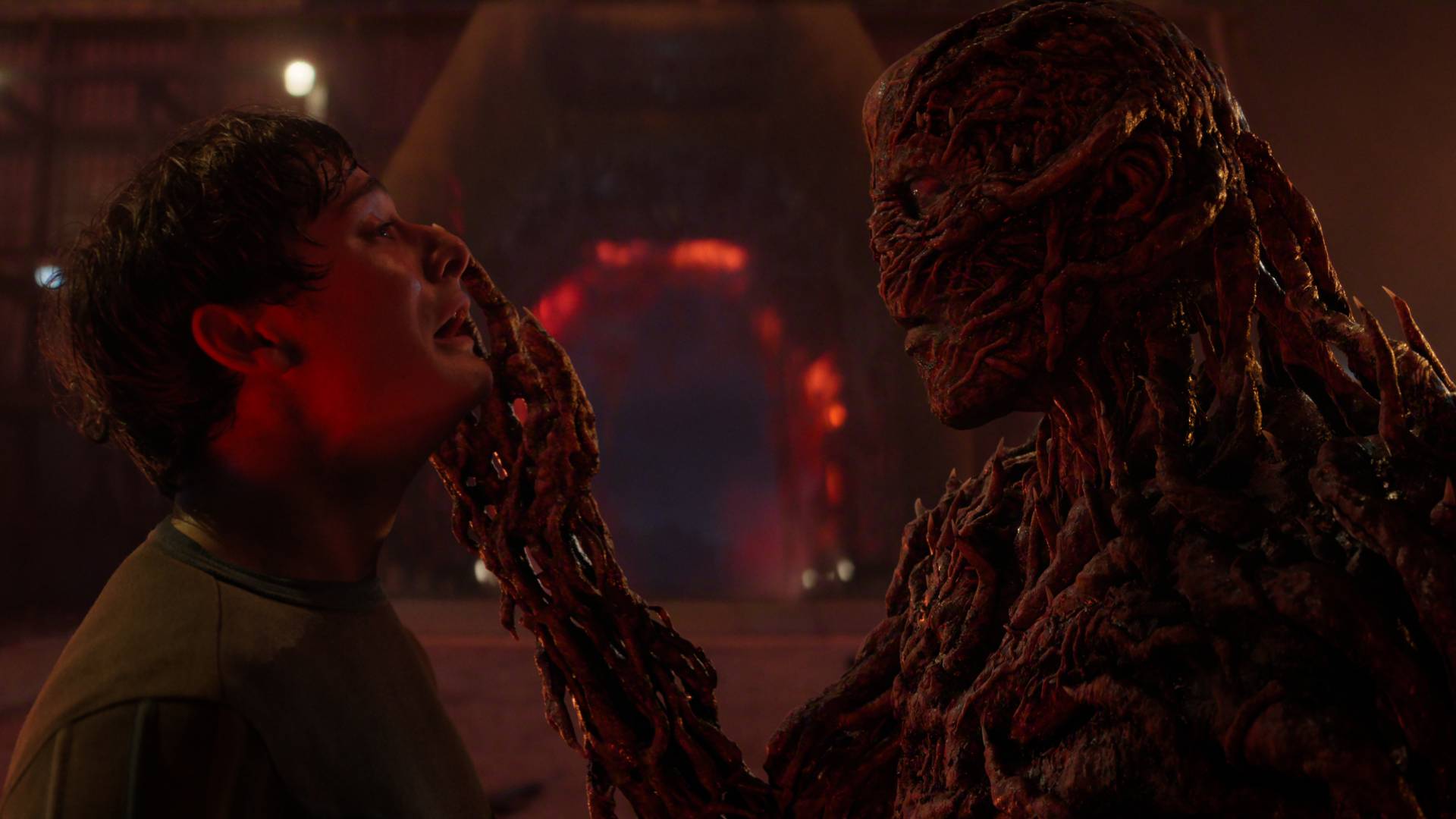GamesRadar+ Verdict
If you want a free, slickly produced FPS with a neat twist, Splitgate 2 delivers. If you want a better but still free FPS, with the same twist but rougher edges, then the truth is you should check out the first game instead.
Pros
- +
Movement feels great
- +
Portal mechanic still impresses
- +
All gameplay content is free
Cons
- -
Map design doesn't maximise portal use
- -
Loadouts and character classes weaken the experience
- -
Battle royale is undercooked
Why you can trust GamesRadar+
Look, I know you want me to talk about the hat. But this is a Splitgate 2 review. It's not a review of catastrophically bad fashion decisions, and it's sure as hell not a review of Imagine Dragons. I love the first game – like many – and the prospect of a glossier, slickly produced sequel is an exciting one. Unfortunately, based on the evidence provided by this sequel, the one group of people who don't seem to particularly like the first game are the ones who made it.
If you're not familiar with Splitgate, the big twist comes down to one word: portals. Portals can be projected onto designated surfaces, and each player can have one pair of portals active at a time. Anybody can pass (or shoot) through any portal, but you can only see through your own. Therefore, the standard idea of strangers shooting one another in a virtual environment remains, but with a new dimension of ambush, escape, sniping, and travel possibilities.
I'll start with some positives, of which – to be fair – there are many. It's free, for one, and there isn't so much as a sniff of pay to win to be found anywhere. If you don't want to pay anything, or if you're unable to, you also get to enjoy a complete game, with no maps or modes locked away. You'll also find that, from your very first match, this is a game that feels good.
Feel Collins
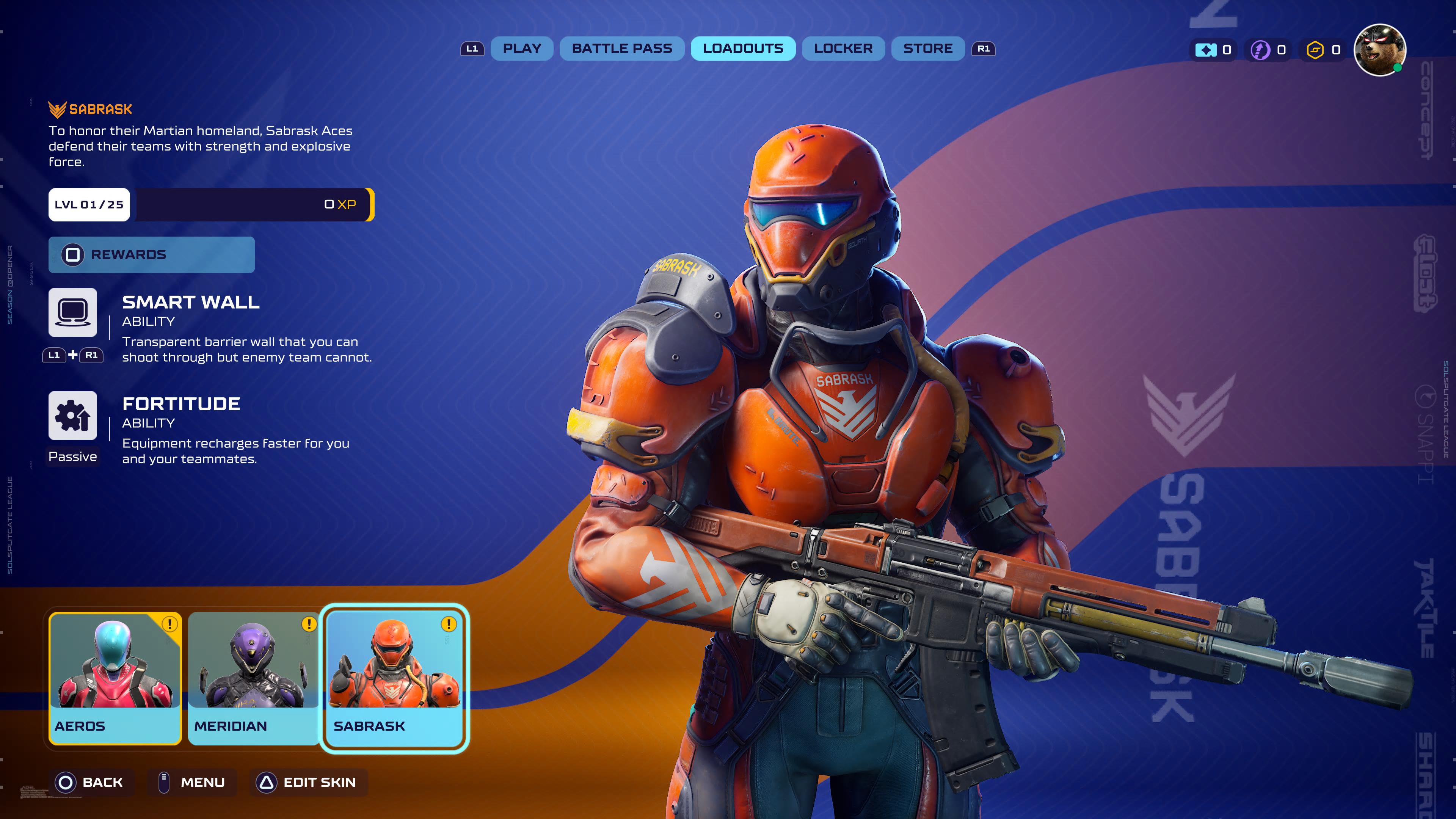
Release date: June 6, 2025
Platform(s): PC, PS5, PS4, Xbox Series X/S, xbox One
Developer: In-house
Publisher: 1047 Games
Movement is fast without being intimidatingly so, and the lengthy slides you can perform can be as useful as they are satisfying. The real star of the movement show, though, is your jetpack. The rapidly-recharging fuel is quite limited, but opens up traversal possibilities that most FPS games don't offer. You can use it to simulate a simple double jump, but it also allows you to cross otherwise impassable gaps, or quickly reach higher platforms. Controlled bursts keep you in the air longer, and the inertia you retain from the right landing can be used to your advantage.
Some match types – such as Team Deathmatch, Domination, and Firecracker (essentially Search and Destroy with respawns) – will be instantly familiar. The dynamic movement already injects a new kineticism into these, and the portal mechanic helps Splitgate 2 distinguish itself further. Take Domination, for example. One of my favorite tactics is to place each of my portals at a different objective (and hope my teammates take care of the third). This way, I defend two objectives at once, and ambushing an enemy across the map by shooting or stepping through my portal is never anything less than wickedly satisfying.
There are currently three character types – called factions – to choose from, each wearing a figure-hugging outfit so snug around the crotch, it threatens to split your gate. Your choice of character determines which passive (also given to the team) and ultimate (dependent on a cooldown) you get for the match. Meridian provides faster health regen and an ability to briefly see nearby enemies through walls, Aeros allows for faster ability recharge and an ultimate that greatly increases speed, while Sabrask enjoys faster equipment recharge and the ability to summon a shield your team can shoot through but the enemy can't. While you (oddly) can't switch factions in the middle of a match, you can swap loadouts on respawn.
Going, going, gun

A lot of what drives the Splitgate games is innovation and variety, which makes the weapons on offer largely disappointing. It's mostly familiar looking assault rifles, carbines, shotguns, pistols, and SMGs. There are a few exceptions – my favorite being the Splitstream, dual-wielded weapons that merge into one when going aim-down-sights – but not many. That's a little disappointing, but familiar from the first game, and it's nowhere near to being the biggest problem.
Weekly digests, tales from the communities you love, and more
Splitgate 2's biggest problem is… well, really, it's the first Splitgate. Almost everything that's done well here was done much better in the first game. Damningly, this very much includes the implementation of the portal mechanic. In part, it's due to the fact that the first game – unlike the sequel – allows you to dispel an enemy portal without sacrificing one of your own (there used to be an anti-portal grenade). That pales next to the much larger issue of map design.
The maps are consistently well designed… if you have no interest in using the portals. And if you have no interest in using the portals, why would you be playing a Splitgate game? While it's still very much possible to use portals to instantly travel great distances and perform long-range ambushes, particularly on the more open maps, opportunities such as this simply don't present themselves as often as they should (indeed, far less often than they did in the first game). There are too many portal walls with no visibility of open spaces; too many tucked away in corners, nooks, and crannies. Opportunistic aggression via portals is discouraged, and it feels like the emphasis is now on using portals for quick escapes.
Portal potty
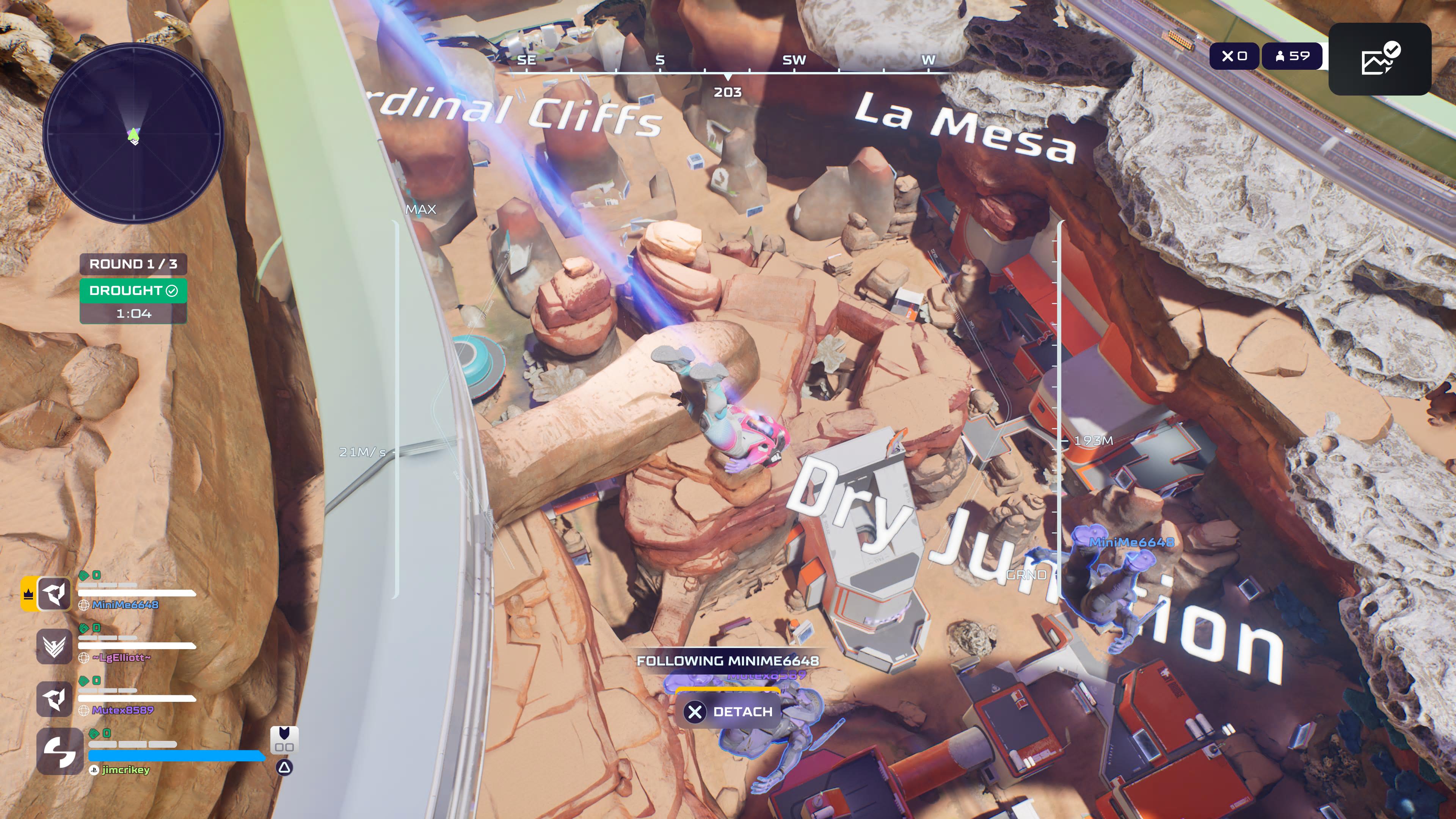
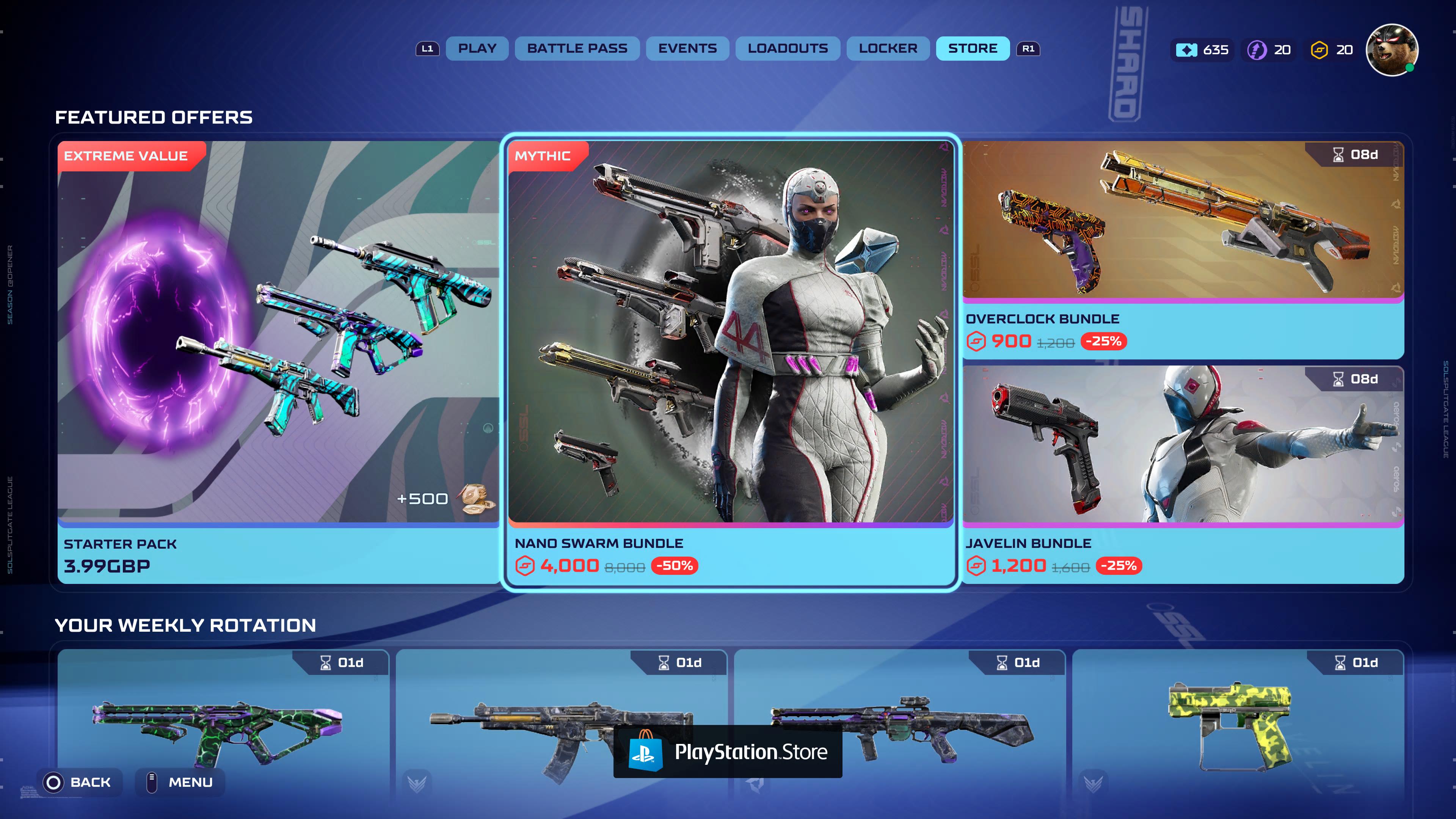
A store is vital for a free-to-play game, but Splitgate 2's struggles to suggest value. Even at its new price (slashed in half), the nano swarm bundle is a good example. Desperate to suggest you're getting a good deal, it includes white coloring for your portals that, if purchased separately, would require a minimum of £12/$15 of currency.
More generally, there's been a shift away from the simplicity that initially drew people to Splitgate. There were no character classes or attachments in the first game. Matches started with everybody on even footing, and success relied on scavenging weapons, clever use of portals, and good ol' FPS skills. By embracing elements you and I have already seen in a thousand other shooters, Splitgate is diluting its identity, and starts to melt into the background as a result. And speaking of things we've already seen a thousand times…
Splitgate battle royale is actually a concept with a lot of potential - but this ain't it. It's not bad; in fact, it's quite good, if something that's unlikely to hold your attention for long periods at a time. I can only assume that it was a relatively late addition during the development process, as it's very poorly optimized. The game struggles with the large map, and the frame rate stutters like a lovestruck teen as a result. I've also recently started to hit a bug where, on my team's death, quitting before any and all remaining teams have finished is treated as quitting a match early. This is hopefully something 1047 Games will fix quite quickly.
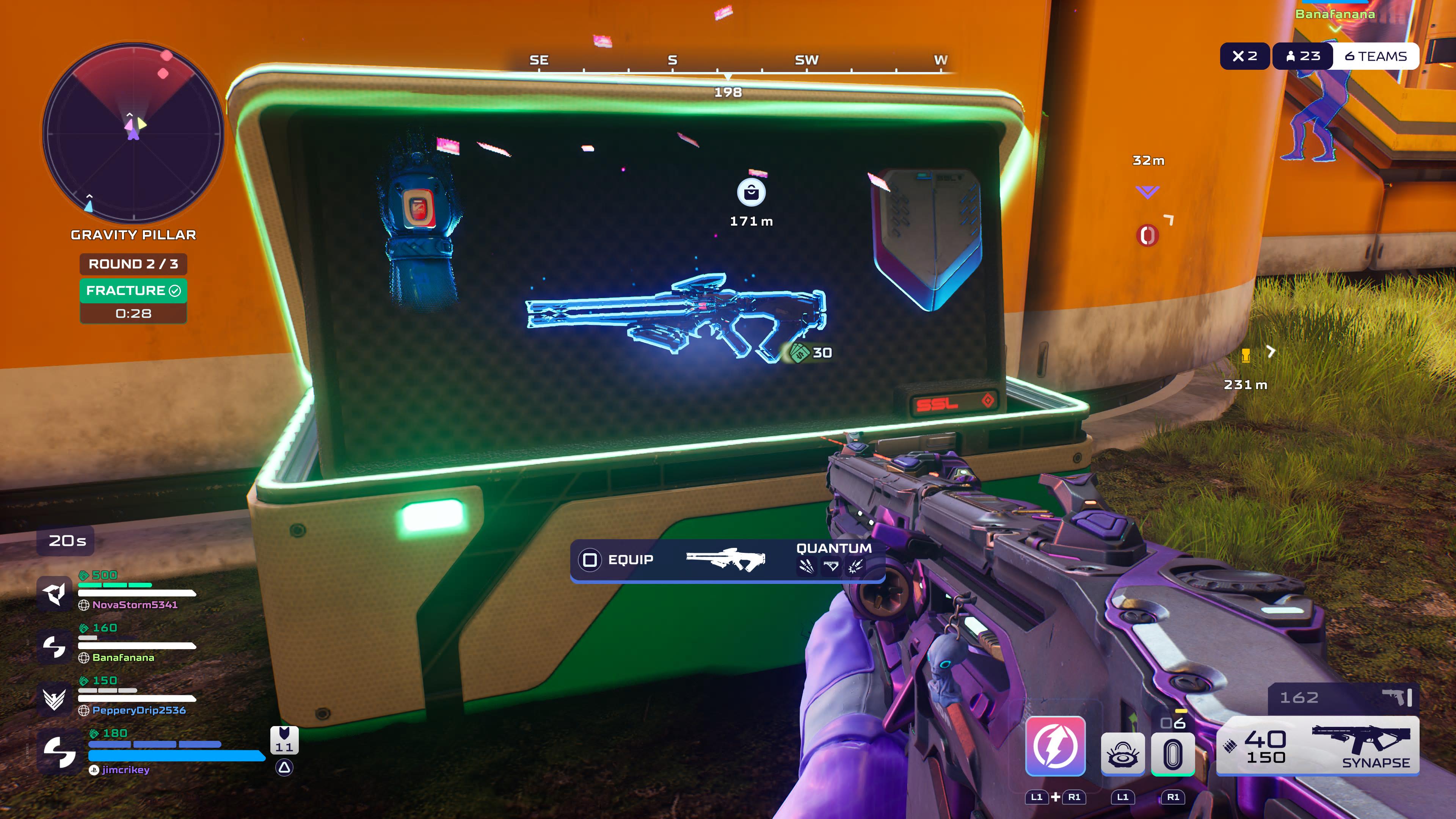
15 teams of four go head-to-head-to-head-to-head-to-(okay, you get the idea). There's the usual diving out of a ship, the usual looting crates and fallen enemies for weapons and equipment, and you start off with just your chosen class's pistol. Unless you're unlucky enough to get picked off within seconds of landing, it's actually fairly easy to quickly get hold of a decent weapon and a few useful bits of loot. You can respawn so long as at least one member of your team is still alive and not in combat, too, so it's more forgiving than battle royales tend to be.
For all the talk of different biomes though, the map – technically it's four connected ones, but in effect it's one – looks uninspiring, and feels unfinished. It does the job perfectly well, but it's basically just a bunch of boxes, walls, and towers with portal surfaces surrounded by half-hearted decoration. It feels like a collection of standard arena maps stapled together rather than a carefully curated battle royale world. Random events such as double damage and extra speed keep things interesting, but it's far from the revolutionary take on the genre that we were promised.
Royale family
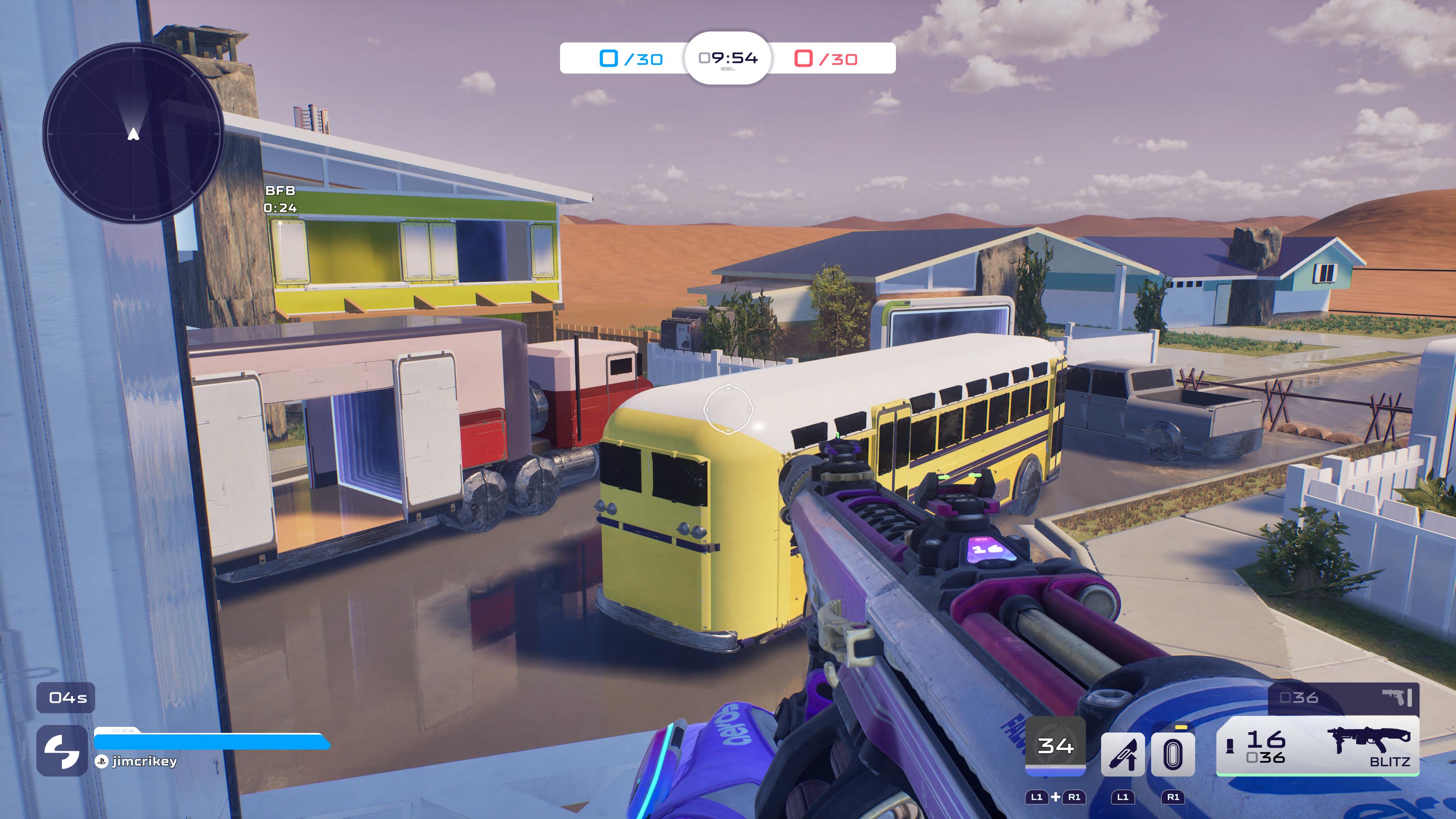
If you think you could do a better job of designing multiplayer maps, you've got a chance to prove it, as there's a map editor (like everything else, available for free). You can host or join custom games using your or anybody else's map, though in my experience so far, custom games attracting the maximum eight players are pretty rare.
It also amused me to see, after Ian Proulx's public railing against the staleness of Call of Duty, that the most popular custom maps are facsimiles of Nuketown and Shipment; which themselves have been reused multiple times within that franchise. Irony upon irony (one of the Nuketown copies is very impressive, though).
Splitgate 2 is free, it has high production values, and there's a lot of fun to be had with it. All that considered, it's definitely worth your time. Nonetheless, it's incredibly frustrating to know that it isn't as good as it could have been, and by spending more time looking back, the team could have taken the Splitgate name several leaps forward.
Splitgate 2 was reviewed on PS5.
Check out our best online multiplayer games list for more to play!

Luke contributed regularly to PLAY Magazine as well as PC Gamer, SFX, The Guardian, and Eurogamer. His crowning achievement? Writing many, many words for the last 18 issues of GamesMaster, something he’ll eagerly tell anybody who’ll listen (and anybody who won’t). While happy to try his hand at anything, he’s particularly fond of FPS games, strong narratives, and anything with a good sense of humour. He is also in a competition with his eldest child to see who can be the most enthusiastic fan of the Life is Strange series.
You must confirm your public display name before commenting
Please logout and then login again, you will then be prompted to enter your display name.
